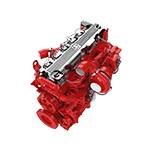Nov . 29, 2024 11:34 Back to list
Overview of Electric Drum Brake Technologies and Their Applications in Modern Vehicles
Understanding Electric Drum Brakes The Future of Automotive Braking Systems
Electric drum brakes represent a significant advancement in automotive braking technology, combining the proven effectiveness of traditional drum brakes with the precision and efficiency of electric control systems. As the automotive industry increasingly shifts towards electrification and automation, the integration of electric drum brakes is becoming more prominent. This article explores the mechanics, advantages, and future potential of electric drum brakes in modern vehicles.
The Mechanics of Drum Brakes
Traditional drum brakes operate on the principle of friction. When the brake pedal is pressed, hydraulic fluid is forced into the brake cylinder, pushing the brake shoes outward against the inner surface of the drum. This creates friction, which slows down the vehicle. While drum brakes are effective and durable, they have certain limitations, especially in terms of heat dissipation and responsiveness.
Electric drum brakes modify this basic design by replacing the hydraulic actuation with an electric system. This means that instead of relying on hydraulic pressure, the brake shoes are activated electronically. When the driver applies the brakes, an electric signal is sent to the braking system, which then engages the brake shoes with precision control.
Advantages of Electric Drum Brakes
1. Enhanced Precision and Control One of the primary benefits of electric drum brakes is their ability to provide more precise control over braking force. The electric actuation allows for finer modulation of the brakes, which can lead to improved stopping power and smoother deceleration. This is especially beneficial in vehicles equipped with advanced driver-assistance systems (ADAS), where precise braking is crucial for safety.
2. Reduced Weight and Complexity Electric drum brakes typically have a simpler design compared to traditional hydraulic systems. By eliminating the need for hydraulic components, manufacturers can achieve weight savings, which is particularly important in electric and hybrid vehicles where every kilogram counts. This reduction in weight can also contribute to improved fuel efficiency and overall vehicle performance.
electric drum brakes

3. Lower Maintenance Requirements The absence of hydraulic fluids in electric drum brakes means fewer components that can wear out or fail. This can lead to lower maintenance requirements and costs over the life of the vehicle. Additionally, electric systems can provide diagnostic capabilities, allowing for early detection of issues before they become significant problems.
4. Adaptability in Various Conditions Electric drum brakes can adapt their performance based on different driving conditions. For example, they can adjust the braking force based on load conditions, temperature, and even driving style, ensuring optimal performance whether the vehicle is heavily loaded or traveling in adverse weather conditions.
Challenges and Considerations
Despite their advantages, electric drum brakes are not without challenges. The integration of electronic systems adds complexity, which can lead to potential failure modes that must be carefully managed. Additionally, the initial cost of adopting these systems may be higher, although this could be offset by long-term savings on maintenance.
Furthermore, regulatory standards and consumer acceptance play crucial roles in the widespread adoption of electric drum brakes. Manufacturers must ensure that these systems meet stringent safety and performance regulations, and educating consumers about their benefits will be essential for market penetration.
The Future of Electric Drum Brakes
As we look to the future, electric drum brakes are likely to play an increasingly important role in automotive design. With the push for electric vehicles gaining momentum worldwide, technologies that enhance efficiency and reduce maintenance will be highly valued. Moreover, as autonomous driving technology evolves, the need for precise control over braking systems will become even more critical.
In conclusion, electric drum brakes represent a promising area of innovation within the automotive industry. Their ability to provide enhanced precision, reduce maintenance, and adapt to various driving conditions positions them well for future applications. As manufacturers continue to explore and develop these systems, we may soon see electric drum brakes become a standard feature in a wide range of vehicles, paving the way for safer and more efficient transportation.
-
Scania Brake Drums: OEM Quality for Optimal Safety & Durability
NewsAug.16,2025
-
R.V.I: Advanced Remote Visual Inspection for Precision
NewsAug.15,2025
-
Discover HYUNDA: Innovative Vehicles, Equipment & Solutions
NewsAug.14,2025
-
R.V.I: Unlock Advanced Insights & Real-time Performance
NewsAug.13,2025
-
Kamaz Brake Drum: Durable & Reliable for Heavy Duty Trucks
NewsAug.12,2025
-
Heavy Duty Iveco Brake Drum - Premium Quality & Safety
NewsAug.11,2025
